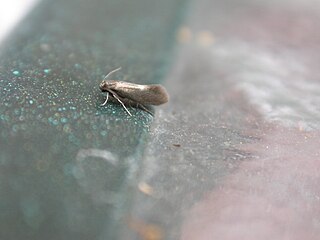| Look up Lycia in Wiktionary, the free dictionary. |
Lycia is a former geopolitical region in Anatolia.
Contents
Lycia may also refer to:
| Look up Lycia in Wiktionary, the free dictionary. |
Lycia is a former geopolitical region in Anatolia.
Lycia may also refer to:
| This disambiguation page lists articles associated with the title Lycia. If an internal link led you here, you may wish to change the link to point directly to the intended article. |
Marmara may refer to:

The superfamily Papilionoidea contains all the butterflies except for the moth-like Hedyloidea.
Dudgeonea is a small genus of moths and the only genus of its family, the Dudgeoneidae. It includes six species distributed sparsely across the Old World from Africa and Madagascar to Australia and New Guinea.
Heterobathmia is a genus of Lepidoptera. It is the only genus in the suborder Heterobathmiina, as well as in the superfamily Heterobathmioidea and in the family Heterobathmiidae. Primitive, day-flying, metallic moths confined to southern South America, the adults eat the pollen of Nothofagus or southern beech and the larvae mine the leaves. Most known species are undescribed.
Immoidea is a superfamily of pantropical moths containing only the family Immidae comprising ten genera with around 250 species, over half of them in the genus Imma. Many are brightly coloured and diurnal. The position of this group is currently uncertain within the group Obtectomera. The larvae feed on the leaves of dicotyledons and conifers including Podocarpus.
Lophocoronoidea is a superfamily of insects in the order Lepidoptera. There is a single genus, Lophocorona, in the family Lophocoronidae. These are small, primitive nocturnal moths restricted to Australia whose biology is largely unknown.

Castniidae, or castniid moths, is a small family of moths with fewer than 200 species: The majority are Neotropical with some in Australia and a few in south-east Asia. These are medium-sized to very large moths, usually with drab, cryptically-marked forewings and brightly coloured hindwings. They have clubbed antennae and are day flying, and are often mistaken for butterflies. Indeed, some previous classification systems placed this family within the butterflies or skippers. The Neotropical species are commonly known as giant butterfly-moths, the Australian and Asian species as sun moths. The larvae are internal feeders, often on roots of epiphytes or on monocotyledons.

Choreutidae, or metalmark moths, are a family of insects in the lepidopteran order whose relationships have been long disputed. It was placed previously in the superfamily Yponomeutoidea in family Glyphipterigidae and in superfamily Sesioidea. It is now considered to represent its own superfamily. The relationship of the family to the other lineages in the group "Apoditrysia" need a new assessment, especially with new molecular data.

Brachodidae is a family of day-flying moths, commonly known as little bear moths, which contains about 135 species distributed around much of the world. The relationships and status of the presently included genera are not well understood.
Whalleyana is an enigmatic genus of moths in the lepidopteran group Obtectomera, endemic to Madagascar. The genus contains two species, whose biology and closest relatives are unknown. The genus had been placed in the picture-winged leaf moths, (Thyrididae), but then was placed in its own family, and later elevated to its own superfamily ; see also Fänger (2004). The genus was named after Paul E. S. Whalley, a British entomologist.

A family of primitive monotrysian moths in the order Lepidoptera, Heliozelidae are small, metallic day-flying moths with shiny smooth heads. In Europe the small adult moths are seldom noticed as they fly quite early in the spring. The larvae are leaf miners and the vacated leaf mines are distinctive because the larva leaves a large hole at the end.
The Palaeosetidae or miniature ghost moths are a family of insects in the order Lepidoptera contained within the superfamily Hepialoidea.
Neotheoridae, or Amazonian primitive ghost moths, is a primitive family of insects in the lepidopteran order containing a single genus and species, Neotheora chiloides.
Prototheora is a genus of moths. It is the only genus of the Prototheoridae, or the African primitive ghost moths, a family of insects in the lepidopteran order, contained in the superfamily Hepialoidea. These moths are endemic to Southern Africa.

The Bistonini are a tribe of geometer moths in subfamily Ennominae. As numerous ennomine genera have not yet been assigned to a tribe, the genus list is preliminary. In addition, the entire tribe is sometimes merged into a much-expanded Boarmiini. In other treatments, the Erannini are included in the present group.

The brindled beauty is a Palearctic moth belonging to the family Geometridae.

The Thyatirinae, or false owlet moths, are a subfamily of the moth family Drepanidae with about 200 species described. Until recently, most classifications treated this group as a separate family called Thyatiridae.
Lycia is a genus of moths in the family Geometridae.

Lycia zonaria, the belted beauty, is a moth of the family Geometridae. The species was first described by Michael Denis and Ignaz Schiffermüller in 1775 and it is found in most of Europe.